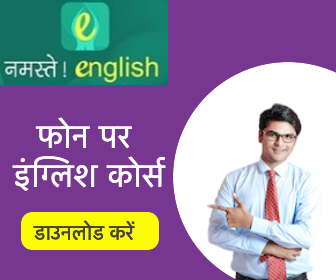When not to put ‘es’ with main verb (मुख्य क्रिया के साथ ‘es’ कब न लगायें)
- With the main verbs ending with ‘Vowel + y’. Such main verbs end with ‘y’ but ‘y’ is preceded by a vowel i.e. a, e, i, o, u. In such cases, we simply put ‘s’.जिन मुख्य क्रियाओं के अन्त में ‘स्वर + y’ हो यानि मुख्य क्रिया का अन्त तो y से हो लेकिन y से पहले कोई स्वर हो जैसे a, e, i, o, u. ऐसे में ‘y’ के बाद केवल ‘s’ का प्रयोग होता है। Example :
1. राम घूमने जाता है। Ram goes for a walk. ( Subject(Ram) ‘3rd Person Singular’ है, इसलिए go के साथ es लगा है।)
2. मैं खेलता हूँ । I play. ( Subject(I) ‘1st Person Singular’ है, इसलिए play के साथ s नहीं लगा है। )
3. अमन मेरे साथ रहता है। Aman lives with me. ( Subject(Aman) ‘3rd Person Singular’ है, इसलिए live के साथ s लगा है। )
4. हम हँसते हैं। We laugh. ( Subject(We) ‘1st Person Plural’ है , इसलिए laugh के साथ s नहीं लगा है। )
5. घाव से खून निकलता है। Blood oozes from the wound. ( Subject(Blood) ‘3rd Person Singular’ है, इसलिए ooze के साथ s लगा है। )



